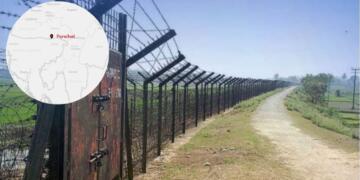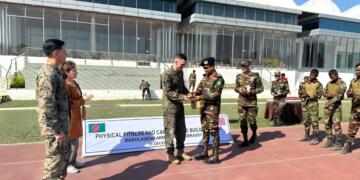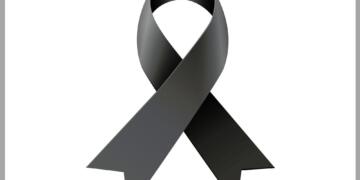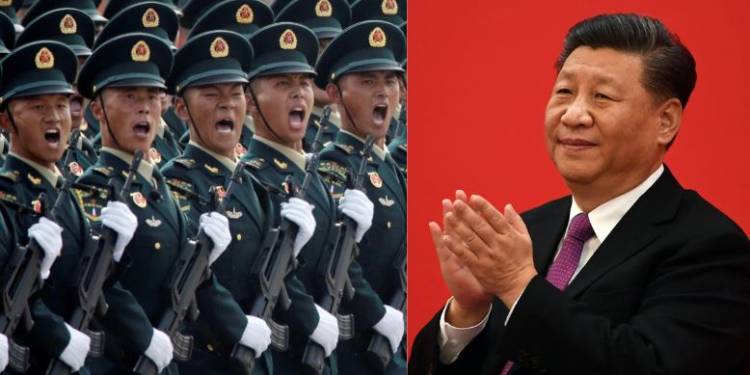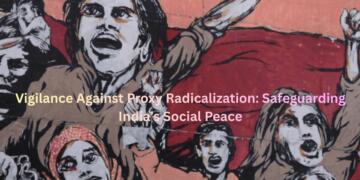“The People’s Liberation Army of China’s only justification to exist in the modern world is that they emerged victors in the Chinese Civil War,” wrote Sanbeer Singh Ranhotra in TFI in a brilliant article outlining how soldiers from the one-child generations are wimps who have absolutely no fighting spirit. Coming on 29th May, the article prophetically foretold the outcome of yet to happen Galwan valley clash, where Indian soldiers of 16th Bihar along with their compatriots from Punjab and medium artillery regiments trashed the numerically superior People Liberation Army Ground Force troops. The limitations of Chinese armed forces are so severe, that they have never really won a war, barring the backstab of India in 1962. That victory too was primarily due to India’s then prime minister sleeping at the wheel while the enemy intruded for over 10 years, rather than any special fighting prowess on the Chinese side. In fact, once the IA recovered from being hamstrung from political appointees, it quickly bounced back and was able to stem further inroads, inflicting massive casualties on the invading Chinese.
The reason that the PLA is a sub-par force when it comes to conventional warfare and prefers other means to achieve its goals is the same reason that is exists in the first place. It is a force meant for perpetuation of the Chinese Communist Party, rather than the Chinese people or the Chinese nation. It was a body created for supporting the communist party push power during their civil war and was meant to grab power from other Chinese and enforce party’s will.
During the second world war, it preferred to fight the Chinese nationalist Kuomintang (KMT) rather than the Japanese and was responsible for destruction of many initiatives by the nationalists to fight the Japanese. Run as an opportunistic guerilla and force, Mao’s armies waited for the Japanese and KMT to annihilate each other and then step in to pick up the pieces with some help from international maneuvering. It was perfectly content with butchering millions of Chinese when it saw a path to power, rather than join them in a face off against the Japanese or other enemies.
That core purpose and ethos of PLA has not changed till the day. Created as a mob to bring communists bosses to power, rather than for principles, heritage and people of a nation, it is a marvelous tool to achieve that goal. The very structure of PLA through the years has been maintained towards that first and primary task, of keeping the party in power, whatever be the costs.
The party is the army, the army is the party
Since the origin of the Chinese communists, the party members were expected to carry out acts of violence to meet the goals of implementing its ideology of wealth redistribution. This was in keeping with the doctrine of perpetual revolution being predicated on violence (Lenin et al.) as well as Mao’s personal philosophy of power flows from the barrel of the gun. While the bulk of the muscle was formed by peasant militias and lumpen proletariat, the communist party members were expected to provide leadership for the strong-arm measures undertaken for “party work”.
Mao himself was made a commander-in-chief of the freshly founded Workers’ and Peasants’ Red Army of China in 1925, shortly after the founding of CPC in 1921. Incidentally one of the first acts of Mao and his red army was to consolidate Mao’s position in the party. By 1935 when Mao became the chairman of the politburo in addition to his role as head of the red army the synthesis of party and army as one entity was complete. From then on, the red army worked not only under the CPC but for all practical purposes directly under the chairman.
Throughout the 20 year long civil war in 1927-1949 period, apart from being joined at the top at Mao, the communist party cadres and red army officers were largely the same set of people. Mao carried out experiments to establish branches of the CPC at the level of companies even. It’s important to note that officering the red army did not necessarily mean fighting, the red army officers did not lead from the front, but were political commissars, general staff and troop coordination. The members of CPC prioritized self-preservation above all (so that the revolution may live through them) and through most of the civil war, even when entire armies were wiped out, they continued to live through escape and defections.
The same model continued post the formation of People’s Republic of China as a state in 1949. Red army, now called PLA continued to report to the Central Military Commission (CMC), under the CPC. In theory, the leader of communist party and military could be two different individuals, following Mao’s example in practice they were the same person. CMC was elected by the politburo and are generally uniformed expect that the two top positions are held by civilians. However, the remaining military members too are part of the party, just that they are uniformed.
The CMC itself has 4 functions, two of which are completely political. They are political works department which makes sure the PLA is integrated into the party and a discipline department, whose main task is to identify and punish those who step out of the line, in terms of thinking too freely.
There are civilian political commissars present at all levels in the army, starting from 2nd in command at company level. This despite that most officers are party cadre anyway. Matters like a company’s development, holding major drills, and soldiers going to college or getting promotions which are undertaken by the military bureaucracy in world’s professional armies, are all decided at meetings of Party branches in China. It is so extreme that even the oath of allegiance is not the country, constitution or people, but to the party.
To ensure that the army never forgets its number one mission of protecting the party against its enemies, PLA has to engage in constant political work. This means 30-40% of an officer’s career is wasted in non-military matters, like learning party propaganda, singing patriotic songs and conducting group discussions on Maoist Communist theory. Oh, and they need to sit for exams on these too and pass them. Senior officers spend time trying to get themselves elected to the CPC national congress, where nearly 300 officers, 10-20% of all delegated present themselves.
The party is deeply embedded into PLA from top down. Not content at being ultimate leader of PLA, the chairman and party have established tentacles going all the way down to micromanage everything that PLA does including thought control. In turn loyalty and subservience to the party is the way for promotions in the army and additional benefits that accrue as part of it. Thinking for oneself even in professional military affairs is likely to be marked as a potential troublemaker and shunted out or worse.
An army organization with “Chinese characteristics”
As PLA is seen as an arm of the party and not national instrument, the management of its personnel is also carried out very differently from regular armies elsewhere in the world. Starting with intake of fresh manpower, to benefits to retirement are all done as per needs of the party rather than with a view of fostering an independent professional force.
Starting out as a militia and a mob, the average Red Solider was never a professional unit. He or she was a common citizen, pulled into the horde at a short notice with rudimentary weapons and little training, with the main aim of bulking up numbers for a tactical maneuver. They were let go almost as soon as the battle or campaign ended and went back to being a farmer or a worker as before. While this was admittedly a great strength for a guerilla fighting in the civil war, the fact that a subservient army was critical for party, meant that the system was continued.
As with the red army, PLA followed a philosophy that the levies should be let go and get reabsorbed back. They therefore promised veterans that they would be absorbed into jobs in state-owned undertaking. Worse those volunteering for the PLA would have to hand over their farmlands to get a position in the armed forces. However, no central agency was established to administer pensions and other benefits for veterans of the world’s largest army. Instead, it was relied on informal instructions to local governments to provide pensions, medical care, and other basic benefits to former service members.
As China underwent an economic transition to a party owned crony capitalism from one of collective farmlands and state-run industries, the reabsorption system has taken quite a hit. Worse this was coupled with reduction of total numbers in PLA from 2.5 million in 2003 to planned 2 million. This was in addition to earlier reductions from its peak of 6.1 million people in mid 1970s. This left millions of Chinese veterans in lurch, who tried to protest to get their dues, but like with every other group which went against the party, were brutally crushed.
If the extremely poor support for retired personnel was not bad enough, even the pay for those serving is quite bad. At the end of a 30-year tenure, an officer in Chinese army would only be making 9000 Yuan, or about 1 lac rupees a month. Contrast this with IA officer with 30 year of service. For one, he would be likely be a Brigadier, and on top of it earning about 2-3 times more. This is particularly harsh as Chinese average income is about 6 times that of India, and therefore in terms of real income adjusted with cost of living, the salaries are dismal.
Coupled with the fact that China does not really care for its soldiers and treats them as dispensable commodities (as seen in the Galwan clash), do not make PLA an attractive employment option in China. Maintaining even the reduced staff levels has become a challenge. PLA therefore tries to make this up through forced intakes.
A significant portion of the PLA is made up of conscripts, who serve only for 2 years. The current estimates put this number as high 40%. Worse, this is not a universal, uniform draft aimed at developing an armed citizenry in a sparsely populated country. The draft is ad-hoc, and different regions of the country are given quotas to be filled which they then proceed to do. The urban areas with richer and better educated youth are usually spared, and the numbers are made up from the poorer rural areas. Further, children of party functionaries avoid serving, and prefer to be part of the party and thus be control rather than be a part of fighting forces. None of this goes to add to the already poor image of soldiering in the country. Not surprisingly most conscripts are unwilling to serve, and there have been numerous cases of those trying to opt out.
The standards of recruits have been low and dropping, and stories abound in Chinese media of low educational and moral qualities of many opting. Made up of misfits, riffraff and criminals, there have been incidents of murderers, escaped prisoners and even head of a criminal gang having signed up. The locals say that “even the deaf and the blind have joined the services” and “schizophrenics and epileptics are not uncommon”.
A profiteer’s racket
Under the prevailing conditions the set of motivations for those few voluntarily joining PLA are very different from what one would expect from those looking for military services under normal circumstances. There are of course those who are gang pressed into service and biding their time till they go out.
Those who “volunteer” are those hoping to parley military service into enhanced status or wealth. The enhanced status comes from using the uniform to gain admission to senior levels in the party. A position in the ruling establishment would open doors for them, in terms of permissions for running businesses, obtaining licenses, contracts and such. These recruits placed a high value on building a network of connections and looked at their stint as a way to gain contacts in highest level of Chinese society. The Chinese establishment too, encouraged the above mindset as part of meeting its twin goals of a running the army “on the cheap” and “keeping the army under the party”.
In the Chinese system the PLA-CPC combine is as much a business as an army-polity. The military directly owns factories, hospitals and real estate which are run by uniformed officers, much like the Fauzi Foundation in Pakistan. The men and officers of PLA are expected to fund the PLA through these “additional activities”, and if they help “supplement individual incomes”, no one complains. The ex-soldiers go on to found and run companies whose contracts are enabled by their friends within the government, both in the uniformed military and the civilians in the party. It is a win-win arrangement by which the post retirement future is secured without cost to state exchequer and party member interests are protected too.
The Chinese government actively opens doors for these businesses by channeling foreign partners to them and providing attractive incentives. In fact, the administrative machinery even helps their favored companies venture outside into different companies, providing institutional support to bypass local laws and support predatory economics outside through state backed political subversion (as we are seeing play out in Nepal currently)
A good example of the above system in play in the Kingold saga, where a PLA veteran with CPC links pulled off the biggest gold scam in history of China. Of course, the word “scam” can only be loosely used in Chinese business context, as these practices are well understood and accepted by all concerned, blessed by the government and seen as an effective way to grow China without being constrained by stupid things like rule of law and principles of economy.
Xi’s personal mafia
When Xi Jinping took over the reins, he ostensibly promised a cleanup and restructuring of the crony system. In fact an anti-corruption drive was carried out with dozens of senior officers being arrested. It went all the way up to a former vice-chairman of the all-powerful CMC for running the system where promotions were bought and sold. Top generals were jailed and one even committed suicide. The organization of CMC and of PLA command structure was completely overhauled.
However, it became clear soon enough that the motivations for the drive had less to do with transforming the system but more to do with establishing Xi’s absolute control over the party apparatus. Not only was there no change in current position, China actually fell in corruption rankings through his presidency. Further, the reforms of Deng era to make PLA more independent and nationalized were rolled back, and it became more enmeshed with the party and not less.
Xi’s real focus was to remove the challengers to his unquestioned and complete control over china, which seemed to have come in part from supporters of ex-President Jiang Zemin in the party. The anti-corruption drive in reality was a purge in good old traditions of communists everywhere. In his quest to be the Fuhrer with no rivals, Xi broke up the CMC from four general departments to fifteen, thus ensuring that no one head can accumulate too much power. To this mix he added specific departments to spy on his own army under the guise of fighting corruption. He reformed up the PLA regional commands into theater commands, supposedly for jointmanship between the forces, but in reality, to mix the command and control of forces between PLAGF, PLAN and PLAAF so that no one arm’s head has sufficient power. In addition, he broke up PLAGF and made rocket artillery into another unit, a most counter intuitive way of ensuring synergy if there ever was one.
He then proceeded to staff the entire set of top brass of his new army with his childhood friends. The vice chairs of CMC and other positions have gone to the princeling faction, the sons of first generation of top red bosses, like Xi himself is.
Clearly Xi is attempting is to reclaim Mao’s mantle and complete his unfinished agenda, to become God-Emperor of all world, starting with China. In that quest, he needs a PLA personally devoted to him, as can be seen by his exhortations to them to be;
“absolutely loyal, absolutely pure, and
absolutely reliable as well as resolutely follow the command of and are
responsible to Chairman Xi, enabling Chairman Xi to feel assured”
Identifying the horde
What we have then, is a military which is Xi’s personal cabal. It fights not according to national interests but to uphold its bosses’ personal aims. It’s not paid and cared for through the state but is an instrument to generate revenue for itself and its owner-managers. It’s a neo-colonial business enterprise where lucrative positions are bought and sold like was done in East India Company of old. Yet, just like the privateers in colonial era, it would be a mistake to underestimate the threat. The bandit armies are very dangerous, just not in the way expected from conventional armies. They are more devious and unpredictable, as they would not follow normal conventions and any rule of civility. Since they are driven by profit motive and personal greed, they are unconcerned with the costs a nation may have to bear for their misadventures. Deaths of their ranks or even national population are entirely immaterial as long as largesse for the survivors are assured. To build on Samir Saran’s 3M model, its army is a medieval horde under the great khan.
It is time, for India and the world to start gaming on how the recent day Ulus of Jochi may be stopped from ravaging through civilization.


